By David Dodge and Kay Rollans
Let’s say you are an Alberta farmer with a section of land. Like the other farmers in your area, you’ve had a long relationship with the oil industry, which has built hundreds of thousands of oil wells on Alberta farmland.
You have a choice. You have an oil well pad and a road across your land to the well site. You can install one oil pump jack and produce oil until the well is dry—or you can install 750 kilowatts of solar and produce electricity as long as the sun shines.
Which of these solutions can fuel your vehicle to travel the longest distance?
This is precisely the question David Kelly, CEO of SkyFire Energy (a Calgary based solar company), and an engineer from Imaginea Energy tackled.
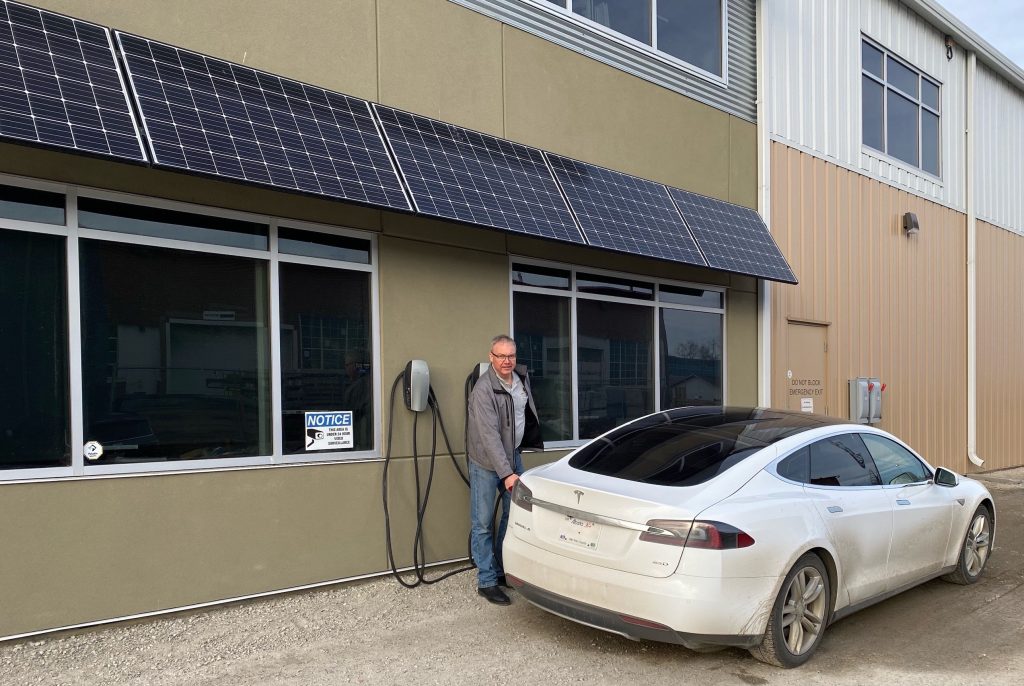
Imagining a low carbon future for oil
It all started with Imaginea Energy making a profound decision to go green, putting mission above profits, and charting a new, more sustainable path to the future.
Imaginea’s former CEO Suzanne West was an entrepreneur who sold her oil company, Black Shire, for $358 million in 2014. Then she started Imaginea Energy, an oil company that sought to use cutting-edge technology to capture flare gas and turn it into methane to run generators. The company also tries to minimize the impact of their work on the surrounding habitat; for instance, they avoided using asphalt to build roads and made efforts to reduce nitrogen oxide emissions.
In keeping with their low-impact goals, Imaginea hired Kelly’s SkyFire Energy to build solar systems at their active well sites in order to power their pumpjacks with renewable energy.
This is when Kelly and an Imaginea engineer got the idea to crunch the numbers and see if an oil pad could produce more transportation distance using oil or solar.
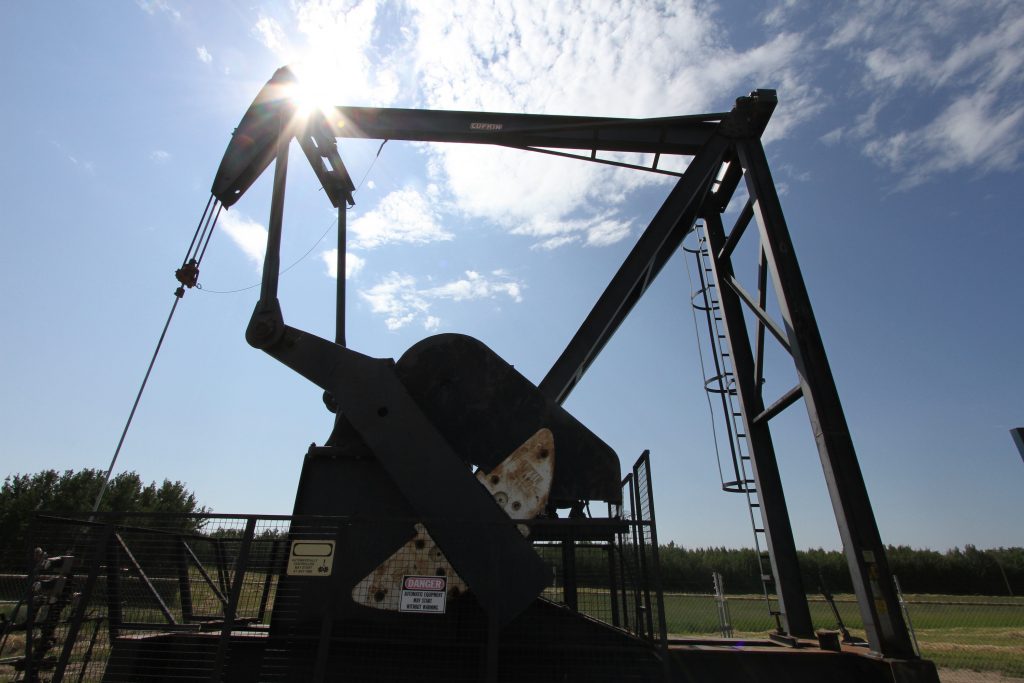
Oil pumpjack in Alberta. 
750 kilowatts of solar fits on an oil well pad.
“Typical well sites are 110 meters by 110 meters. On that site, we can install 750 kilowatts of solar. So, in southern Alberta, we can produce almost 1 million kilowatt hours a year, which translates to about 6.5 million kilometers on a Tesla model 3,” Kelly said.
By comparison, he added: “An average well, in Alberta produces about 1,000 litres [of oil] a day. If we convert a portion of that oil into gasoline and diesel fuel, we can drive about 3 million kilometers in a Lexus ES 350.”
Solar versus oil – How far can you drive?
According to Kelly’s calculations, a solar installation installed on the same footprint as an oil well can drive a Tesla 2.2 times farther than an internal combustion engine in a Lexus using the oil extracted from the same site.
Part of the reason is energy efficiency.
If you look at a typical gasoline-fueled vehicle, “something in the order of 20 per cent of that energy gets turned into moving you as a passenger down the road,” says Kelly.
For electric vehicles such as the Tesla, about 90 per cent of the electrical energy input is translated into moving the vehicle.
Kelly created another analogy for a presentation he was giving in Cranbrook, British Columbia. He compared using gas at $1.24 per liter to electricity purchased from BC Hydro and to self-generated solar energy. At the time, electricity was selling for 11 cents per kilowatt hour (kWh) in British Columbia, and you could generate solar electricity for about seven cents per kWh.

Using that same Lexus ES 350, he said, “we could go about 1,600 kilometers on 100 dollars’ worth of gasoline. We could go over 4000 kilometers on [100 dollars’ worth of] BC hydroelectricity, and over 6,000 kilometers on solar power,” says Kelly.

Source: Bloomberg 
Source: Bloomberg
Energy is energy
Producing energy takes energy. We could look at the energy used to produce gasoline (something in the order of 50 per cent of the energy actually produced), and we could look at energy then spent refining, transporting, and distributing that gasoline, but that’s not the point of this article.
We could consider the embodied energy in the infrastructure used to pump oil or harvest solar energy. But that’s also not the point of this article.
The point is: energy is energy, but not all energy is equal in terms of efficiency, economic cost, or cost on the environment. If jurisdictions like Alberta are to be successful in the future, they will have to work with current economics and the clear trends toward energy transition and use the right kinds of energy for the appropriate purposes.
“You know, people get all upset about solar in Alberta. Well, solar energy is part of Alberta’s energy mix. It helps Alberta. It’s part of our energy and we should be supporting it just as we’re supporting other energy sources here in the province,” says Kelly.
The irony is, says Kelly, prior to the onset of the green energy revolution, oil and gas were among the biggest consumers of solar energy systems. With so many remote sites and instruments to run, solar has made sense as an energy source in the oil industry itself, even when solar was expensive.
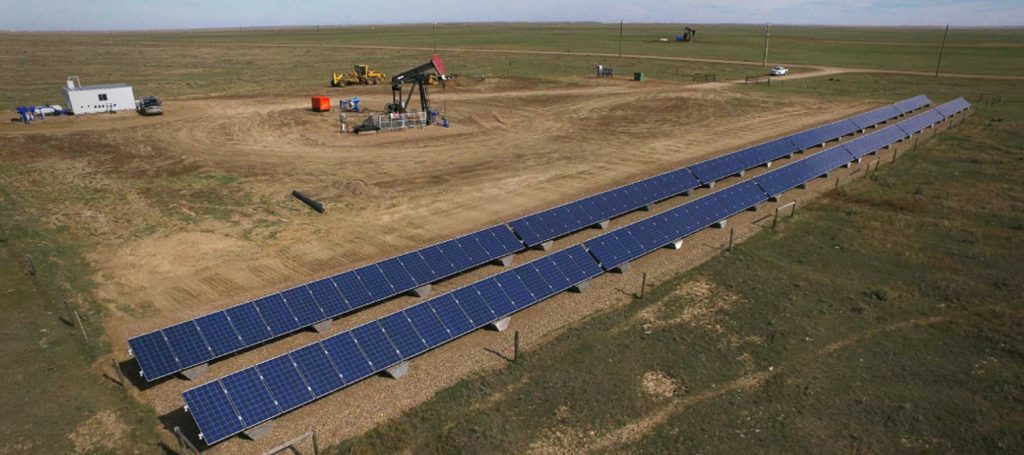
From Imaginea to post-oil solar energy
A lot of Albertan’s have worked in the oil industry. In fact, most of the people in the renewable energy sector today have at some point worked in the oil industry, later transferring their skills to renewables.
In a way, the project to power Imaginea oil pumpjacks with solar energy almost a decade ago was visionary, and foreshadowed the energy and labour transition we’re seeing today.
Since then, SkyFire Energy has hooked up with RenuWell, a solar farm company started by former farmer and oil worker Keith Hirsche.
This spring, RenuWell is starting two pilot projects to repurpose abandoned oil wells by building 750-kilowatt solar farms on the existing infrastructure. The sites still have to be reclaimed and the habitat and soil health restored, but the roads and well pads can be reused.
“The RenuWell project is looking at wells that have been decommissioned,” says Kelly. “We still have some infrastructure there. We have a road to the site. We have power lines to the site. So, we are repurposing all those things.”
There are more than 170,000 abandoned oil wells in Alberta. Even if solar farms are built on only 10 per cent of the sites, it would produce enough solar electricity to achieve the solar generation goals of the previous NDP government: 30 per cent renewable electricity by 2030.
Moreover, as Kelly noted, this approach “continues to [provide] lease payments to landowners and it will pay municipal taxes to municipalities as well.”
This is energy transition at its finest and a most pragmatic.

Will solar replace oil and gas?
This is a largely silly question with a false premise. Alberta’s oil and gas resource is world class. It has transformed Alberta to the wealthy jurisdiction that it is today.
Nothing can replace the economic windfall that oil and gas brought Alberta, a place where young men with a high school education could make $150,000 a year working in the industry.
But those big oil booms are a thing of the past. Alberta needs to look ahead, and solar is definitely one of a dozen things that can help build Alberta’s future economy.
Although you rarely hear about it, “we’re seeing solar blossoming at all scales in Alberta today,” says Kelly. The biggest solar projects in Canadian history are being built now and they are being developed at extremely low cost. In fact, solar has become the cheapest way to generate electricity in the world.
With 77 per cent of global future investments projected to go to renewable energy between now and 2050, Alberta is well positioned to build gigawatts of small- and utility-scale solar. And you hardly hear about it, but Alberta is going through a solar boom right now.
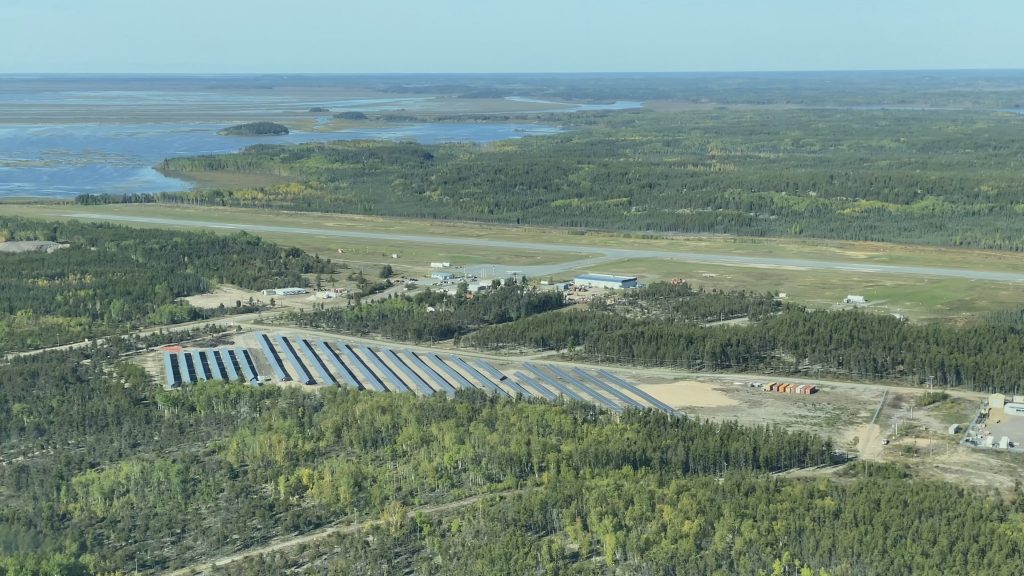
Solar driving changes to cars and homes
Cheap solar is also driving innovation in the home building industry making it very economical to build solar-powered, net-zero energy homes—a specification expected to be wired into the national model building code by 2030.
“Edmonton seems to be a solar hotspot or net-zero-energy home hotspot in Canada. And we’ve got large home builders such as Jayman homes where every single house they build has solar on the roof,” says Kelly.
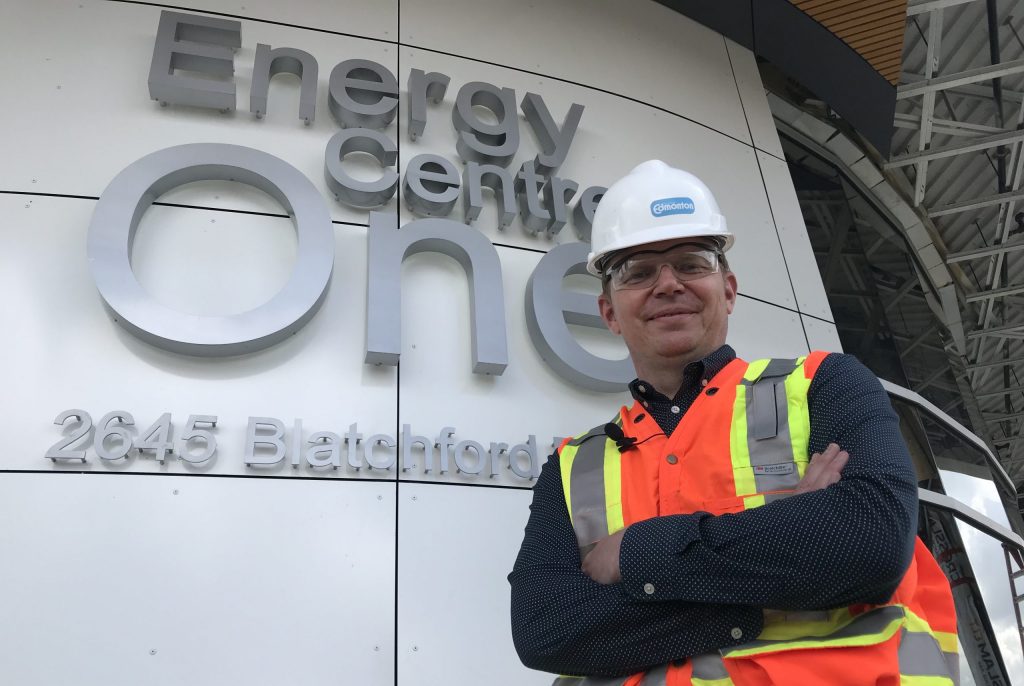
Edmonton also boasts the Blatchford project—a new, net-zero community in which up to 30,000 people will live. It is expected to be one of the largest-carbon neutral communities in North America.
Solar is not the be-all and end-all of electricity production, but it’s very clear that there is room for tremendous economic growth as it carves out a significant place in the puzzle of a low-carbon future.
Former Imaginea CEO Suzanne West passed away on March 6, 2018, at the age of 52 after a brief battle with cancer. She left us with her roadmap toward a future in which energy is energy, and in which conventional energy works hand-in-hand with renewable energy to build a successful and economically sustainable future.





